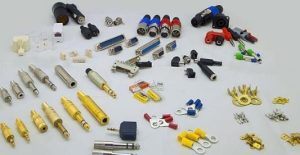What Frequencies Are Covered by FR2 Bands?
As 5G technology continues to expand its reach, understanding the specific frequencies it utilizes becomes crucial for industry professionals and tech enthusiasts alike. The FR2 bands, commonly referred to as millimeter waves (mmWave), cover a higher frequency spectrum compared to the traditional sub-6 GHz used by FR1. This section of the spectrum enables faster data transmission rates and increased capacity, albeit with some physical limitations due to the nature of high-frequency waves.

Specific Frequency Ranges
FR2 bands span from 24.25 GHz to 52.6 GHz. This wide range is subdivided into numerous bands, each allocated for specific types of 5G deployments. Notable bands within this range include:
- n257 (26.5-29.5 GHz)
- n258 (24.25-27.5 GHz)
- n260 (37-40 GHz)
- n261 (27.5-28.35 GHz)
These bands were specifically chosen to take advantage of the relatively underused millimeter wave spectrum, which allows for the transmission of large amounts of data at very high speeds.
Benefits of Higher Frequencies
The use of higher frequencies in FR2 bands offers significant benefits:
- Increased Data Rates: With higher frequencies, FR2 can achieve data transmission speeds that are several times faster than those possible in FR1. In optimal conditions, this can reach up to several gigabits per second, facilitating extremely fast downloads and uploads.
- Higher Capacity: FR2 frequencies can handle more simultaneous connections per square meter than lower frequency signals. This capacity is essential in crowded urban areas and for applications requiring high data throughput like virtual reality and ultra-HD streaming.
Challenges with Millimeter Waves
Despite their benefits, millimeter waves face challenges that affect their practical implementation:
- Reduced Range and Penetration: High-frequency signals have a shorter range and are more easily blocked by buildings, trees, and even rain. This requires a denser infrastructure of cell towers and repeaters to maintain reliable connectivity.
- Line of Sight Needs: Effective use of FR2 often requires a clear line of sight between the transmitter and receiver, which can limit the flexibility of network setup in urban environments.
Implications for Network Design
The unique properties of FR2 necessitate innovative approaches to network design. Network engineers must creatively address the challenges of signal range and obstruction to optimize the performance of 5G networks in urban settings. This often involves integrating a mix of FR1 and FR2 technologies to achieve both coverage and speed.
FR2 bands are transforming the capabilities of 5G networks by enabling ultra-fast speeds and high capacity. The strategic deployment of these frequencies is crucial to harnessing the full potential of 5G, particularly in environments where cutting-edge applications are in demand. As we advance, the continued evolution of 5G technology will likely see an even greater reliance on these high-frequency bands, despite the challenges they pose.